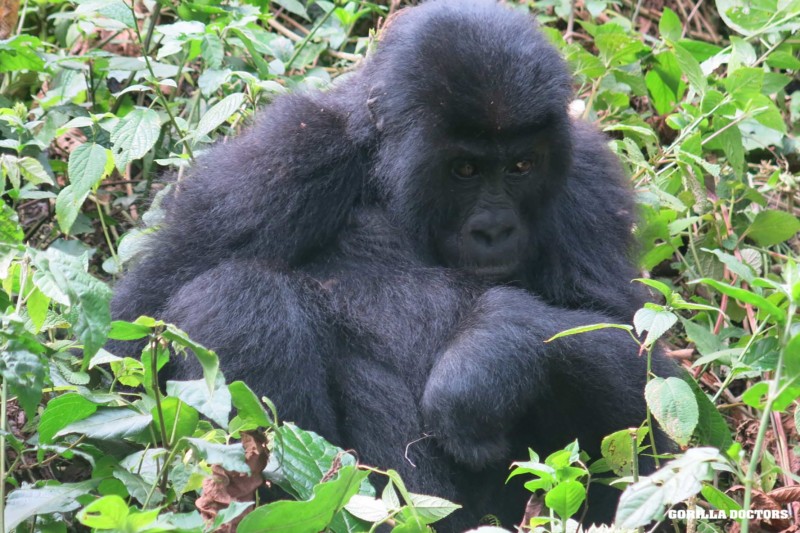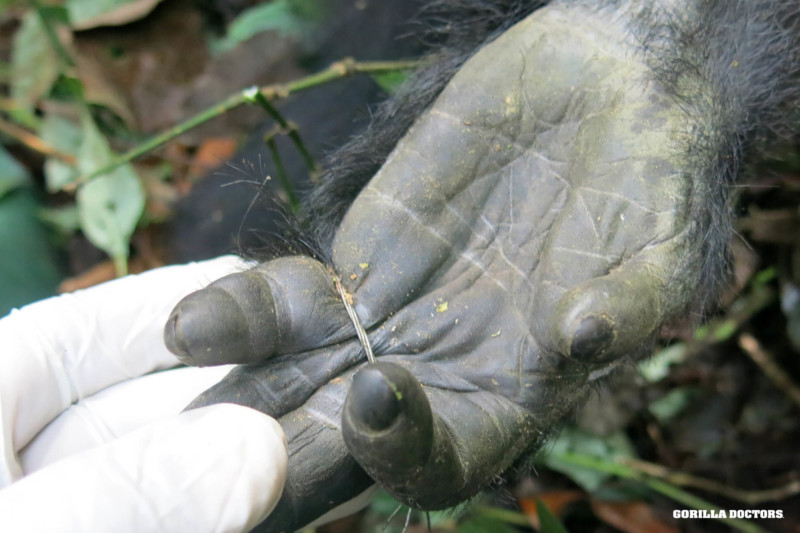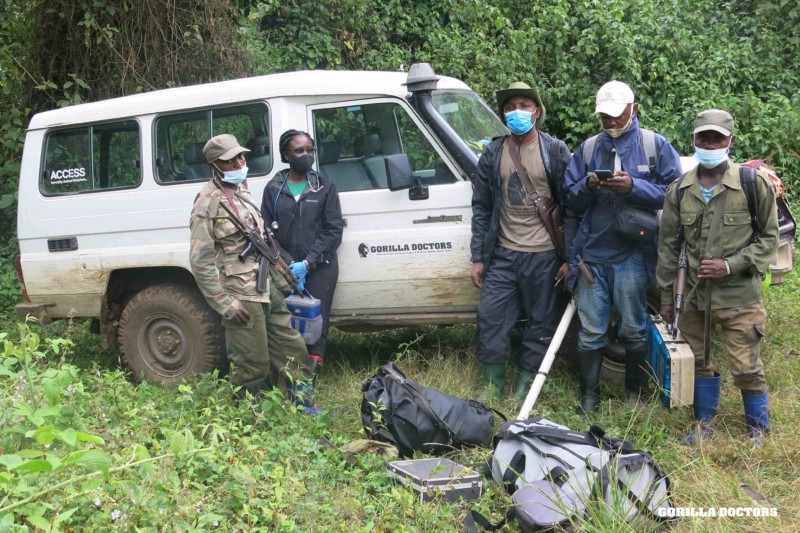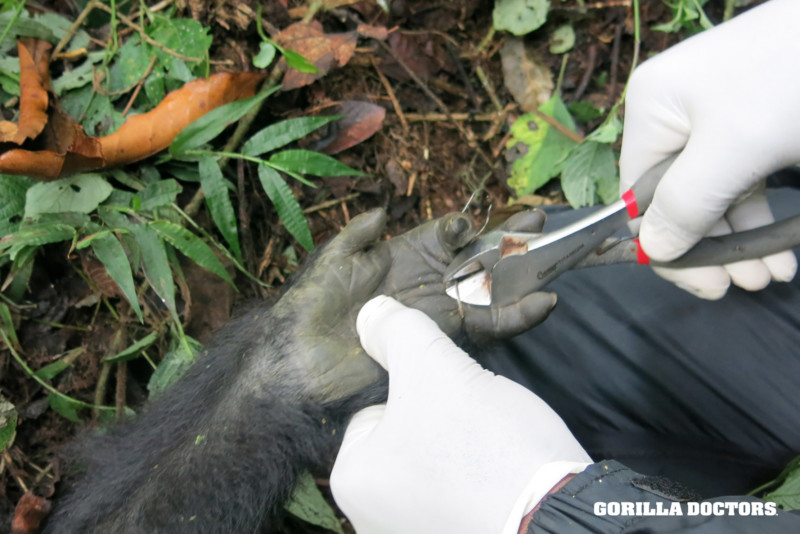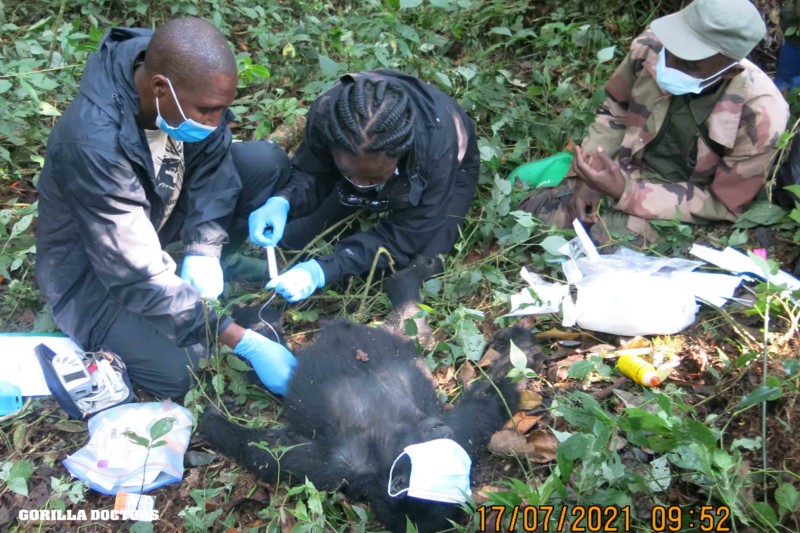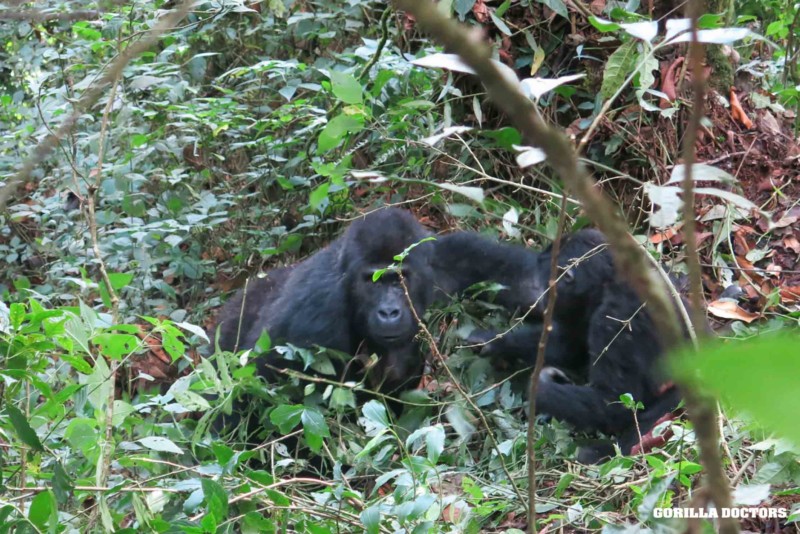Gorilla Doctors Rescue Grauer’s Gorilla from Snare
By Gorilla Doctors Staff on Thursday, July 22nd, 2021 in Blog.On the evening of Thursday, July 15, Dr. Eddy Kambale Syaluha, Gorilla Doctors Head Veterinarian in DR Congo, received a phone call from Kahuzi-Biega National Park: a 3.5-year-old male Grauer’s gorilla, Wilungula, was caught in a wire snare. Wilungula’s mother, Mukono had separated the wire from the stake in the ground, but the wire was still tightly wrapped around Wilungula’s left hand. The following report summarizes our successful intervention, snare removal and treatment of Wilungula.
Location: Kahuzi-Biega National Park, DR Congo
Gorilla Group: Bonane
Grauer’s Gorilla: Wilungula, male, 3.5yo
Gorilla Doctors: Eddy Kambale Syaluha and Fabrice Katembe Malonga, with assistance from Dr. Lina Nturubika
Date: July 17, 2021
On Friday, July 16, Drs. Eddy and Fabrice departed Goma for Kahuzi-Biega, a trip they would normally make by ferry. But this time, Drs. Eddy and Fabrice drove – a journey of more than five hours – in order to minimize their chances of exposure to SARS-CoV-2, the virus causing COVID-19, as community transmission has continued to rise. They arrived at Kahuzi-Biega at 7:00PM and prepared to leave for the forest early the next morning.
On Saturday morning, July 17, Dr. Lina Nturubika joined the intervention team to assist Drs. Eddy and Fabrice. Dr. Lina is a Gorilla Doctors-supported Master’s degree student and she also works as a veterinarian at the Lwiro Primate Rehabilitation Center. The intervention team also included three trackers and four rangers for protection.
Our Hospital is the Forest
When the intervention team arrived at Bonane gorilla group they found Wilungula resting next to Bonane, the lead silverback and Mukono, Wilungula’s mother. Drs. Eddy, Fabrice and Lina visually assessed Wilungula’s condition and estimated his weight to be approximately 15kgs (33lbs). Using this estimate they prepared a dart for administering anesthetic drugs.
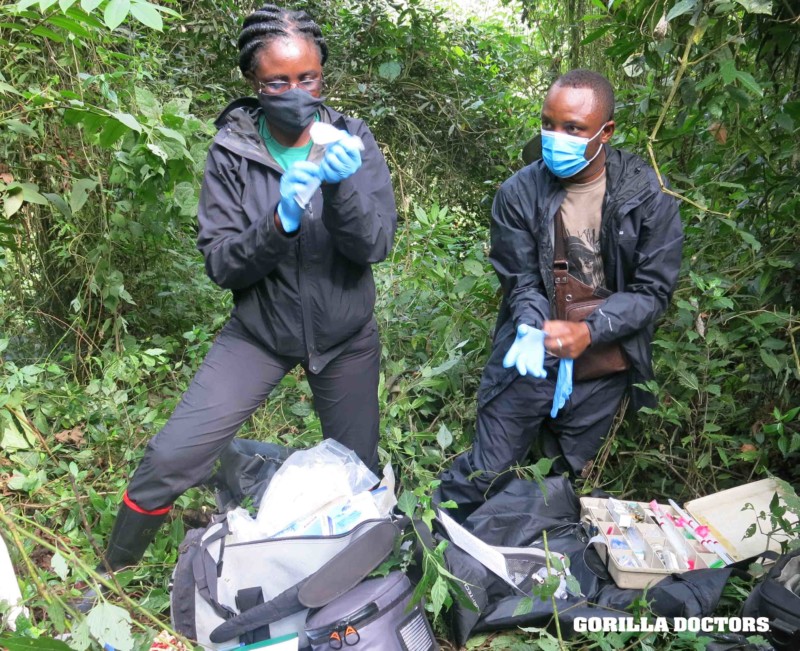
Dr. Lina and Fabrice prepare the anesthesia medication to be administered via dart. © Gorilla Doctors
Our Patients are Wild
At 9:28AM they successfully darted Wilungula and by 9:36AM he was anesthetized. While the trackers kept the rest of the gorilla group at bay by standing between the veterinarians and the gorillas, Drs. Eddy, Fabrice and Lina worked quickly to remove the wire snare, treat Wilungula’s wounds and perform an overall physical exam.
At 10:11AM they reversed the anesthesia and by 10:16AM Wilungula was back with Bonane group. The veterinary team observed Wilungula until 10:30AM to assure his full recovery from the anesthesia, then left the group with trackers to continue the observation. As of Wednesday July 21, Kahuzi-Biega National Park trackers reported that Wilungula is doing well and healing.
A Note from our Executive Director
Grauer’s gorillas, the largest primate on the planet, are critically endangered. Found only in eastern DR Congo, most of the population is unhabituated to the presence of humans, making individual health monitoring and hands-on veterinary care extremely difficult. Here is one exception: watch Gorilla Doctors treat and relocate an unhabituated Grauer’s gorilla from a village back to the safety of the forest.
In most cases, we cannot get close enough to unhabituated gorillas to observe individuals for clinical signs of illness or injury. Dr. Eddy, with support from National Geographic has developed a protocol for non-invasive health monitoring techniques for unhabituated Grauer’s gorilla populations and we beta-tested these new protocols earlier this year during the Tayna Reserve census in DR Congo. Samples are pending analysis.
As is the case with many animals, natural mortality is highest for young gorillas, with one study estimating a mortality rate of 26% in eastern lowland (Grauer’s gorillas) during the first few years of life.1 Snares pose an additional significant threat, so Gorilla Doctors’ ability to monitor, respond to, and successfully treat habituated Grauer’s gorillas contributes to the overall health of this fragile population. While Wilungula has many years before he will have an opportunity to reproduce, rescuing him from the wire snare and preventing limb loss or reduced limb function and/or infection, increases his fitness and chances of survival into adulthood.
Subscribe to our Blog
Follow us on Facebook, Instagram and Twitter
Join our LinkedIn Group
1Yamagiwa, J. and J. Kahekwa. 2001. Dispersal patterns, group structure, and reproductive parameters of eastern lowland gorillas at Kahuzi in the absence of infanticide. In Mountain Gorillas: Three decades of research at Karisoke, eds. M.M. Robbins, P. Sicotte and K.J. Stewart, 89-122. Cambridge: Cambridge University Press.


 Donate
Donate
